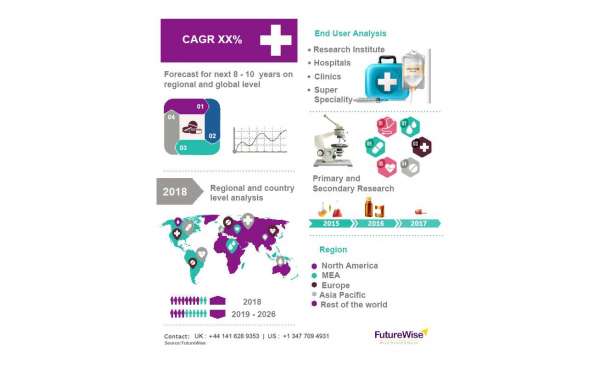Many people are blind when choosing skin care products, and they are always looking for a brand that suits them. For the single product of facial cleanser, many people think that it is good to wash clean. Yes, it does wash clean, so do you feel that the longer you use your facial cleanser, the drier and drier your facial skin is? Check your facial cleanser to see what kind of surfactant is the main ingredient in it?
As mentioned in the article, amino acid-based surfactants are the mainstream ingredients of high-end facial cleansers at present, but because of their high price, many products on the market only need to add some amino acid-based moisturizing and other ingredients, which are called amino acid facial cleansers [sweat]. However, a class of surfactants that are cheap and cause great damage to the skin are still used!
Speaking of amino acid facial cleanser, many surfactants are amino acid surfactants (less foaming, too little proportion, too little cleanliness) and use in combination with others. Not only has the amino acid lineage, but also the cleaning power is the most important thing. It's still about cost control! Therefore, there is currently no genuine pure amino acid cleansing product on the market. Even if there is a cost control method in the market, the cost of ingredients is about 2%, then this will be sky-high, and only players like us can be so willful!
Introduction of main ingredients of facial cleanser and surfactant
(1) Sodium sulfate dodecyl
This is a very strong degreasing surfactant. It is currently the most commonly used cleansing ingredient for facial cleansers for oily skin or men. The disadvantage is that it is potentially irritating to the skin. Compared with other surfactants, it is the most irritating. For more than a decade, related research reports have pointed out the fact that SLS is irritating to the skin. Due to the excessive degreasing power, the excessive removal of the sebum film naturally generated by the skin will reduce the skin's own defense ability in the long run, causing dermatitis, skin aging and other phenomena. Therefore, if you really want to use this type of product, it is only recommended for those with healthy skin and oily skin. For people with allergies and dry skin, avoid using this type of product.
(2) Sodium sulfate polyoxyethylene alkyl
It is a surfactant with good degreasing power. It is slightly less irritating to skin and mucous membranes than SLS. The so-called eye mucous membrane irritation refers to the phenomenon that the eye will stimulate the iridescence when it sticks to the eye. Of course, not all surfactants cause eye mucosal irritation. This type of cleanser is widely used, in addition to face wash products, it is also widely used in the formulation of shower gels and shampoos. It is widely used by manufacturers because of its good cleaning power and low cost of raw materials. Facial cleansers with SLS or SLES as the main cleaning ingredient usually need to be formulated into a slightly alkaline formula in order to give full play to the cleaning power. If it is added to the product together with fruit acid, the effect of fruit acid will be greatly reduced because it cannot be adjusted to an acidic solution. Therefore, it is not recommended to buy cleaning products with these two types of cleaning ingredients claiming to be combined with fruit acids. Compared with SLS, SLES and saponification formula, which one has stronger degreasing power or greater irritation? In terms of cleaning power, SLS, SLES is not inferior to the saponification formula. The irritation to the skin is not far away. However, in terms of the touch after washing, the saponified formula is better.
(3) Sodium acyl sulfonate
It has excellent cleansing power and is low in skin irritation. In addition, it has excellent skin-friendliness, the touch during and after washing is good, the skin is not too dry and has a soft touch. When this ingredient is used as the main facial cleanser formula, the pH value is usually controlled between PH5-7, which is very suitable for normal skin. Therefore, it is recommended that people with oily skin, or those who like to wash their face dry and without oily feeling, choose this type of ingredients, and long-term use is more secure for the skin.
(4) Sulfosuccinates
It is a moderately degreasing surfactant and is rarely used as a major cleaning ingredient. Although the degreasing power is not strong, it has excellent foaming power, so it is often used in combination with other cleansing ingredients to adjust the foam. In addition to facial cleansers, it is more commonly used in foaming body washes and children's body washes, or as a foam booster in cleaning ingredients with poor foaming properties. It has little irritation to the skin and mucous membranes of the eyes. For dry and allergic skin, it can be regarded as a mild cleansing ingredient.
(5) Alkyl Phosphates
It is a mild, moderate degreasing surfactant. This type of product must be adjusted in an alkaline environment in order to effectively exert its cleaning effect. It has good skin-friendly properties, so it feels good to the touch during or after washing. However, long-term use is still not recommended for alkaline-sensitive skin.
(6) Sodium Acyl Sarcosinate
Moderate fat removal, low irritation, good lathering power, mild chemical properties. Rarely used alone as a cleaning ingredient, it is usually formulated with other surfactants. The ingredients are similar to (3) sodium acyl sulfonate except that the degreasing power is slightly weaker.
(7) Alkyl polyglucoside
This surfactant is made from natural plants and has no toxicity or irritation to the skin and the environment. With moderate cleaning power, it is a newly popular hypoallergenic cleaning ingredient. At present, there is a kind of dishwashing detergent that uses AGPs, and the price is slightly more expensive. Housewives who have used it may wish to compare it with other formulas of dishwashing detergent, and they must be able to confirm the mildness and non-irritatingness of this type of surfactant from the feeling of the hand. But facial cleansers with AGPs as the main ingredient are still rare.
(8) Amphoteric surfactant
Generally speaking, this type of cleaning ingredients is low in irritation, good in foaming, and moderate in degreasing power. So, it is more suitable for dry skin or baby cleansing formula. In the current cleaning market, baby shampoo is the most used. Used in facial cleansers, it is often used with surfactants with strong degreasing power.
(9) Amino acid-based surfactants
Amino acid-based surfactants are originally manufactured using natural ingredients. The ingredients themselves can be adjusted to be weakly acidic, so the irritation to the skin is very small, and the skin-friendly is particularly good. It is the mainstream of high-end facial cleanser cleaning ingredients at present, and the price is relatively expensive. For long-term use, there is no need to worry about damage to the skin.
In addition to the above-mentioned surfactants, there are also some mild, low-irritant, moderate degreasing powers that are often used, all of which can be regarded as better cleaning ingredients. In addition, there are facial cleanser formulations that combine saponification and synthetic surfactants as cleansing ingredients. The cleansing effect of this facial cleanser, and the feeling after cleansing, tend to be saponified formulas. The side effects and irritation are also similar to the saponification formula.








